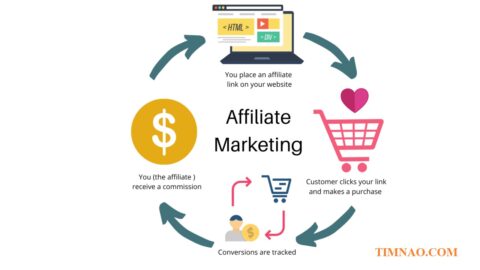Introduction
Freelancing has transformed the way people work, offering flexibility, financial freedom, and the ability to choose your own projects. Whether you’re looking to escape the traditional 9-to-5 grind or searching for an extra income stream, freelancing can be a game-changer.
In this guide, we’ll explore three of the most lucrative freelancing fields: writing, graphic design, and web development. By the end, you’ll have a clear roadmap to launching and growing a successful freelance career.
Step 1: Laying the Foundation for Freelance Success
Identify Your Niche
Not all freelancers offer the same services. To stand out, you need to focus on a specific niche. Ask yourself:
- What am I passionate about?
- What skills do I have that people are willing to pay for?
- Where do I see myself growing?
For example:
- A freelance writer could specialize in SEO blog writing, technical writing, or copywriting.
- A graphic designer might focus on branding, web design, or social media graphics.
- A web developer could offer WordPress development, front-end design, or eCommerce solutions.
Essential Tools for Freelancers
To work efficiently, invest in the right tools:
- Productivity Tools: Trello, Asana, Notion
- Communication: Slack, Zoom, Google Meet
- Portfolio Websites: LinkedIn, Behance (for designers), GitHub (for developers)
- Freelance Platforms: Upwork, Fiverr, Freelancer
Step 2: Freelance Writing – Turning Words into Profit
Writing is one of the easiest freelancing careers to start, as it requires minimal investment. However, competition is fierce, so you need to find ways to differentiate yourself.
Types of Freelance Writing
- Blog Writing: SEO-friendly content for businesses and brands.
- Copywriting: Persuasive content for ads, websites, and emails.
- Technical Writing: Manuals, documentation, and instructional content.
- Ghostwriting: Writing for clients who publish under their own names.
- Creative Writing: Short stories, screenplays, and scripts.
How to Build a Writing Portfolio
- Write guest posts for blogs and websites.
- Publish on platforms like Medium.
- Create a personal blog showcasing your expertise.
Step 3: Freelance Graphic Design – Where Art Meets Opportunity
Graphic design is an in-demand skill that allows creatives to work on diverse projects. Whether it’s logos, websites, or branding materials, businesses always need quality visuals.
Popular Freelance Graphic Design Services
- Branding: Logos, business cards, brand identity.
- Web Design: Website layouts, UI/UX design.
- Print Design: Brochures, flyers, posters.
- Illustration: Custom artwork for books, websites, and media.
Building a Graphic Design Portfolio
- Showcase a variety of work, including mock projects.
- Use Behance and Dribbble to attract clients.
- Create a personal website with an engaging portfolio.
Step 4: Freelance Web Development – Coding Your Way to Success
With the internet booming, web development is one of the highest-paying freelance careers. Businesses constantly seek skilled developers to build, maintain, and enhance their online presence.
Types of Web Development
- Front-End Development: HTML, CSS, JavaScript for user interfaces.
- Back-End Development: PHP, Python, Node.js for server-side operations.
- Full-Stack Development: A combination of front-end and back-end skills.
Building a Web Development Portfolio
- Create sample websites and web apps.
- Host projects on GitHub.
- Offer free or low-cost services to gain experience.
Step 5: Finding Freelance Clients and Projects
Where to Find Clients
- Freelance Platforms: Upwork, Fiverr, PeoplePerHour.
- Social Media: LinkedIn, Twitter, Facebook Groups.
- Networking: Attend industry events, engage in online forums.
- Cold Outreach: Directly email businesses that might need your services.
Step 6: Setting Your Freelance Rates and Managing Finances
How to Price Your Services
- Research market rates.
- Charge based on experience and project complexity.
- Choose between hourly or project-based pricing.
Managing Your Finances
- Open a separate business account.
- Use invoicing tools like PayPal or QuickBooks.
- Save for taxes and unexpected expenses.
Step 7: Scaling Your Freelance Business
Expanding Your Services
- Learn complementary skills (e.g., writers can learn SEO, designers can learn web development).
- Offer packages instead of one-off services.
- Create digital products like templates or online courses.
Building Long-Term Client Relationships
- Provide excellent service and meet deadlines.
- Offer retainers for ongoing work.
- Stay in touch with past clients for future projects.
Step 8: Avoiding Burnout and Maintaining Work-Life Balance
Time Management Strategies
- Use time-blocking to structure your day.
- Prioritize tasks with the Eisenhower Matrix.
- Take regular breaks to maintain productivity.
Setting Boundaries with Clients
- Define work hours and stick to them.
- Limit the number of revisions included in a project.
- Learn to say no to unreasonable demands.
Conclusion
Freelancing offers endless opportunities, but success requires strategy, discipline, and continuous learning. Whether you’re a writer, designer, or developer, building a sustainable freelance career is within your reach. Focus on delivering value, building strong client relationships, and improving your skills—soon enough, you’ll be thriving in the freelance world!
By following this guide, you’ll be well on your way to a profitable and fulfilling freelance career. Ready to take the next step? Start building your portfolio and reaching out to clients today!



Hello to every body, it’s my first pay a visit of this blog;
this website contains amazing and truly fine
data in favor of visitors.